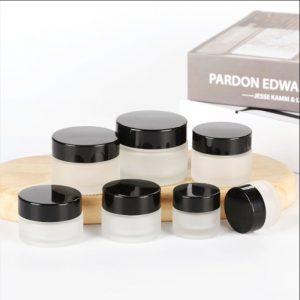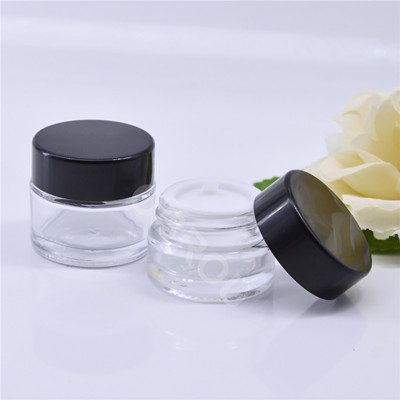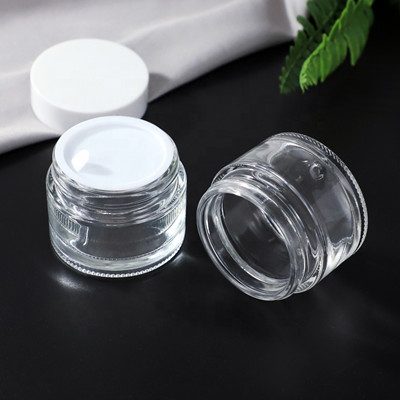





|
Product
|
Empty 5g 100g 30g 10g 10ml 1oz bottle Round Face 50g Frosted Clear Black Gold Glass Cosmetic Cream Jar and Containers for Creametic jars 10g
|
|
Capacity
|
5g,10g,20g,30g,50g,100g glass bottle glass jars and bottlesfrosted cosmetic jar 1oz cosmetic jar gold cosmetic jar clear cosmetics jar cosmetic jar
container cosmetic jars 10g |
|
Material
|
Glass glass bottle glass jars and bottlesfrosted cosmetic jar 1oz cosmetic jar gold cosmetic jar clear cosmetics jar cosmetic jar container cosmetic jars 10g
|
|
Bottel Color
|
Blue , Amber , Clear , Green , Forsted glass bottle glass jars and bottlesfrosted cosmetic jar 1oz cosmetic jar gold cosmetic jar clear cosmetics jar cosmetic jar
container cosmetic jars 10g |
|
Cap Color
|
Gold,Silver,Rose gold,Matte gold,Matter silver , Plastic white luxury cosmetic packaging frosted plastic bottles cosmetics jar frosted cosmetic bottle cream jar white 10g
|
|
Printing
|
Label , Painting , Frost , Silk screen priting , Hot stamping , Electroplating or according to customer’s requiement luxury cosmetic packaging frosted plastic bottles cosmetics jar frosted cosmetic bottle cream jar white 10g
|
|
Sample
|
Free glass bottle glass jars and bottlesfrosted cosmetic jar 1oz cosmetic jar gold cosmetic jar clear cosmetics jar cosmetic jar container cosmetic jars 10g
|
How are glass bottles made?
We often use various glass products in our lives, such as glass windows, glasses, glass sliding doors, etc. Glass products are both beautiful and practical. They can be loved by their crystal clear appearance and can make full use of their hard and durable physical properties. Some artistic glass will even make the glass have more patterns and enhance the decorative effect. In this article, we will introduce the production methods and raw materials of glass bottles.
- How are glass bottles made?
- Blow molds are made, and the process is generally planer-grinder-CNC carving or CNC washing machine.
- The glass bottle production process mainly includes: ①Pre-processing of raw materials. The bulk raw materials (quartz sand, soda ash, limestone, feldspar, etc.) are crushed, the wet raw materials are dried, and the iron-containing raw materials are processed for iron removal to ensure the quality of the glass. ②Batch preparation. ③Melting. The glass batch is heated at a high temperature (1550~1600 degrees) in a pool furnace or a pool furnace to form a uniform, bubble-free liquid glass that meets the molding requirements. ④Forming. Liquid glass is put into the mold to make glass products of the required shape, such as flat plates, various utensils, etc. ⑤ Heat treatment. Through annealing, quenching and other processes, the internal stress, phase separation or crystallization of the glass is cleaned or generated, and the glass is changed. Structural state.
- Glass bottle production process and raw materials
First of all, the mold must be designed and manufactured. The glass material is made of quartz sand as the main raw material, and other auxiliary materials are melted into a liquid at high temperature, and then injected into the mold, cooled, cut, and tempered to form a glass bottle. Glass bottles generally have a rigid logo, and the logo is also made of a mold shape. According to the manufacturing method, the molding of glass bottles can be divided into three types: manual blowing, mechanical blowing and extrusion molding. Glass bottles can be divided into the following types according to their composition: one is soda glass, the other is lead glass, and the third is borosilicate glass.
The main raw materials of glass bottles are natural ore, quartz stone, caustic soda, limestone and so on. The glass bottle has a high degree of transparency and corrosion resistance, and the material properties will not change in contact with most chemicals. The manufacturing process is simple, the shape is free and changeable, the hardness is large, heat-resistant, clean, easy to clean, and can be used repeatedly. As packaging materials, glass bottles are mainly used for food, oil, wine, beverages, condiments, cosmetics and liquid chemical products, etc., with a wide range of uses. However, glass bottles also have their disadvantages, such as large weight, high transportation and storage costs, and inability to withstand impact.





































